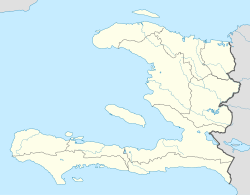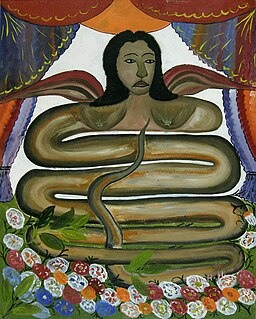
Lwa, also called loa or loi, are spirits in the African diasporic religion of Haitian Vodou. They have also been incorporated into some revivalist forms of Louisiana Voodoo. Many of the lwa derive their identities in part from deities venerated in the traditional religions of West Africa, especially those of the Fon and Yoruba.

Our Lady of Fátima (Portuguese: Nossa Senhora de Fátima, formally known as Our Lady of the Holy Rosary of Fátima,, is a Catholic title of Mary, mother of God based on the Marian apparitions reported in 1917 by three shepherd children at the Cova da Iria in Fátima, Portugal. The three children were Lúcia dos Santos and her cousins Francisco and Jacinta Marto. The bishop of Leiria, José Alves Correia da Silva, declared the events worthy of belief on 13 October 1930.
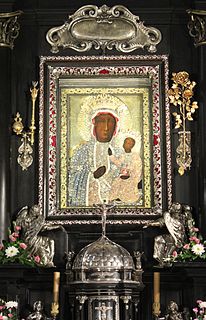
The Black Madonna of Częstochowa, also known as Our Lady of Częstochowa, is a venerated icon of the Blessed Virgin Mary housed at the Jasna Góra Monastery in Częstochowa, Poland. Several pontiffs have recognised the venerated icon, beginning with Pope Clement XI, who issued a canonical coronation to the image on 8 September 1717 via the Vatican Chapter. It has also merited three pontifical golden roses to date.
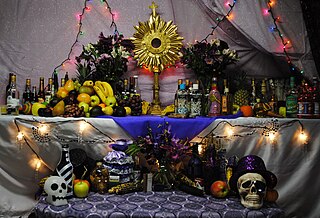
Folk Catholicism can be broadly described as any of various ethnic expressions and practices of Catholicism in Catholic communities. In general, when aspects of folk religion intermingle with Catholic beliefs in an area, folk Catholicism will result. Practices identified by outside observers as folk Catholicism have varied from place to place, and may at times contradict the official doctrines and practices of the Roman Catholic Church, and general Christianity.

The Sanctuary of Our Lady of Lourdes or the Domain is an area of ground surrounding the Catholic shrine (Grotto) to Our Lady of Lourdes in the town of Lourdes, France. The Sanctuary is a destination for pilgrimage; sick pilgrims are reputed to be miraculously healed by Lourdes water. This ground is owned and administered by the Roman Catholic Church, and has several functions, including devotional activities, offices, and accommodation for sick pilgrims and their helpers. The Domain includes the Grotto itself, the nearby taps which dispense the Lourdes water, and the offices of the Lourdes Medical Bureau, as well as several churches and basilicas. It comprises an area of 51 hectares, and includes 22 separate places of worship. There are six official languages of the Sanctuary: French, English, Italian, Spanish, Dutch and German.

Oungan is the term for a male priest in Haitian Vodou. The term is derived from the Fon word hounnongan. oungans are also known as makandals.

The Sanctuary of Our Lady of Knock, commonly referred to as Knock Shrine, is a Roman Catholic pilgrimage site and national shrine in the village of Knock, County Mayo, Ireland, where locals claimed to have seen an apparition in 1879 of the Blessed Virgin Mary, Saint Joseph, Saint John the Evangelist, angels, and Jesus Christ.
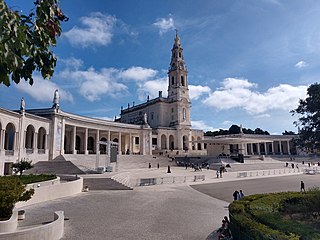
Cova da Iria is a quarter in the city and civil parish of Fátima, Santarém District, Portugal. Several of the reported Marian apparitions of Our Lady of Fátima witnessed by the three small children-shepherds of Fátima in 1917 took place here.
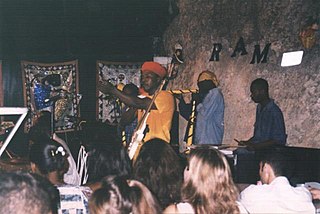
RAM is a mizik rasin band based in the city of Port-au-Prince, Haiti. The band derives its name from the initials of its founder, songwriter, and lead male vocalist, Richard A. Morse. The band's music has been described by Morse as "Vodou rock 'n' roots", and has been one of the prominent bands in the mizik rasin musical movement in Haiti. RAM began performing together in 1990, and recorded their first album in 1996. The band's music incorporates traditional Vodou lyrics and instruments, such as rara horns and petro drums, into modern rock and roll. The band's songs include lyrics in Haitian Creole, French, and English.
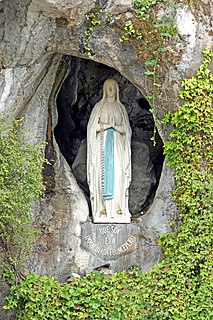
Our Lady of Lourdes is a Roman Catholic title of the Mary, mother of Jesus, venerated in honour of the Marian apparitions that occurred in Lourdes, France. The first apparition of 11 February 1858, of which Bernadette Soubirous told her mother that a "Lady" spoke to her in the cave of Massabielle while she was gathering firewood with her sister and a friend. Similar apparitions of the "Lady" were reported on 18 occasions that year, until the climax revelation of Our Lady of the Immaculate Conception took place. On 18 January 1862, the local Bishop of Tarbes Bertrand-Sévère Laurence endorsed the veneration of the Blessed Virgin Mary in Lourdes.

Saint-Marc is a commune in western Haiti in Artibonite. Its geographic coordinates are 19°7′N72°42′W. At the 2003 Census the commune had 160,181 inhabitants. It is one of the biggest cities, second to Gonaïve, between Port-au-Prince and Cap-Haïtien.
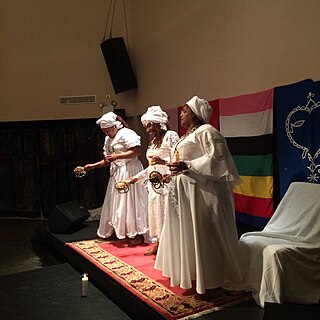
A manbo is a priestess in the Haitian Vodou religion. Haitian Vodou's conceptions of priesthood stem from the religious traditions of enslaved people from Dahomey, in what is today Benin. For instance, the term manbo derives from the Fon word nanbo. Like their West African counterparts, Haitian manbos are female leaders in Vodou temples who perform healing work and guide others during complex rituals. This form of female leadership is prevalent in urban centers such as Port-au-Prince. Typically, there is no hierarchy among manbos and oungans. These priestesses and priests serve as the heads of autonomous religious groups and exert their authority over the devotees or spiritual servants in their hounfo (temples).

Haitian Vodou is an African diasporic religion that developed in Haiti between the 16th and 19th centuries. It arose through a process of syncretism between several traditional religions of West and Central Africa and the Roman Catholic form of Christianity. There is no central authority in control of the religion and much diversity exists among practitioners, who are known as Vodouists, Vodouisants, or Serviteurs.

Acquafondata is a comune (municipality) in the Province of Frosinone in the Italian region Lazio, located in the Monti della Meta area, about 130 kilometres (81 mi) southeast of Rome and about 50 kilometres (31 mi) east of Frosinone.

The National Shrine Basilica of Our Lady of Las Lajas, commonly called Las Lajas Shrine, is a basilica church located in southern Colombia. The basilica is situated within the municipality of Ipiales, in the Nariño Department, and is built inside the canyon of the Guáitara River.
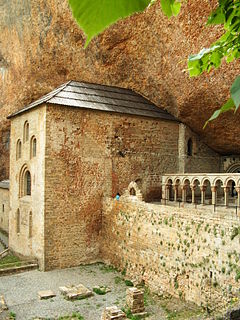
Christianity has a strong tradition of pilgrimages, both to sites relevant to the New Testament narrative and to sites associated with later saints or miracles.
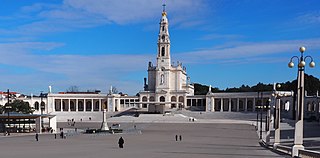
The Sanctuary of Fátima, officially titled Sanctuary of Our Lady of the Rosary of Fátima, but also known as Shrine of Our Lady of Fátima, is a group of Catholic religious buildings and structures in Cova da Iria, in the civil parish of Fátima, in the municipality of Ourém, in Portugal.
Emerante Morse, also known as Emerante de Pradines Morse was a Haitian singer, dancer and folklorist, and the daughter of Haitian entertainer Auguste de Pradines.

The Chapel of the Apparitions is a small chapel located in Cova da Iria that was constructed in the 1920s to mark the exact location where three little shepherd children reported having received the famous apparitions of the Blessed Virgin Mary in Fátima, Portugal.

